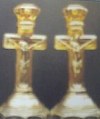Drapery Variant
The DRAPERY and DRAPERY VARIANT Tumblers
By Cecil Whitley- June 1998
 |
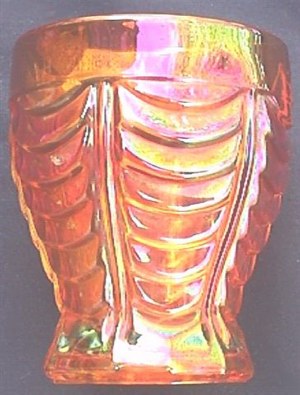 |
Northwood DRAPERY tumbler
|
DRAPERY VARIANT by Riihimaki
|
I've known for some time that the best way to learn about something is to write an article about it. Doing the research is not the hard part, but separating what was thought to be true years ago and what is known or accepted now is difficult. The early authorities and researchers had tough times. There were no books or articles, no clubs and collectors to share ideas, or to rely on for assistance. I encountered this when I began research on the Northwood Drapery tumbler.
It was a big surprise to find that, with the exception of Carl Burns in his book, The Collectors Guide to Northwood Carnival Glass, there was no mention of the very rare Drapery tumbler. I have searched diligently for something written by my friend, the late John Britt. I know he had photographed ours and must have planned it for his HOACGA articles at a later time.
We were able to purchase the one we have at a Tom Burns auction in 1993. It is white and one of two known. This “buy” was one that caused a lot of excitement because it is so rare and because it is American made. Most of the “unknowns” that show up now are foreign made. An authority on the Drapery pattern is Dr. Roy Heiger, a fellow Texan. He does an interesting and informative program on the Drapery pattern in general.
There are only a few shapes known in carnival glass in the Northwood Drapery pattern. They are the berry dish, the rosebowl, the variant vase and the standard vase. No pitchers are known.
The tumbler has an N in a circle on the inside bottom and is a pretty white. I consider it one of the top rarities in our collection.
The Drapery Variant has been researched by many writers and is usually found in advanced collections only and in bright marigold.
The production of the Drapery Variant has been credited to Jenkins, Northwood, and English makers.
The latest research shows that it was definitely made in Finland.
A diagram of the tumbler is shown in the 1939 Riihimaki, Finland Catalog. No sizes nor colors are given for the tumbler, other than the #5073, but there is no question that it is the same design as Drapery Variant.
We have the Variant in three sizes. The regular table size is 3 ¾” tall, and the others, 2 ¾” tall, and a very small 2” shot. All are marigold.
While Standard and Variant tumblers are often made by the same company, such as Dandelion Variant and the Dandelion, both made by Northwood, or by competitive companies, such as Waterlily and Cattails, this is not the case of the Drapery and Drapery Variant. No relationship of this kind is indicated with these two. The only similarity is the simple, but elegant drapery effect on both. No other name would be acceptable. Either of these tumblers would be a great addition to ANY collection!
|
DRAPERY VARIANT UPDATE-April 2005
Recently Glen Thistlewood discovered evidence from some newly found Markhbeinn catalogs, that Drapery Variant was manufactured by Josef Inwald of Czechoslovakia. Markhbeinn was a glass wholesaler/distributor, much as Butler Brothers, Baltimore Bargain House, etc. in the U.S. They were not glass manufacturers.
In these catalogs, along with known Inwald patterns such as Double Diamond, Jacobean, and Nola, are seen a range of shapes in the Drapery Variant pattern, confirming that Drapery Variant was made in Carnival Glass by Josef Inwald of Czechoslovakia. Various sizes in tumblers, two sizes of plates, pitcher, bowl, and the decanter set are all seen in color and listed as irise (iridized - Carnival).
Since the only shape displayed in the Riihimaki catalogs known in Carnival is a tumbler, is it possible that this one shape was made by both manufacturers? Perhaps the Finnish version was produced in crystal only.
Since none of us has access to the same information over time, it is nice to offer combined knowledge in print, enabling access by all interested parties.
Diane Fry
|
|
NOTE: In 2000, a white Drapery tumbler sold at auction for $2800. The information stated above remains valid on this date. 6/7/04
DRAPERY VARIANT Chop Plate
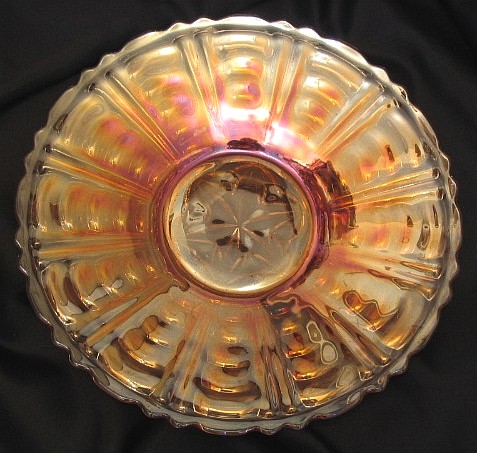
Interior of 13 in. DRAPERY VARIANT Plate is plain
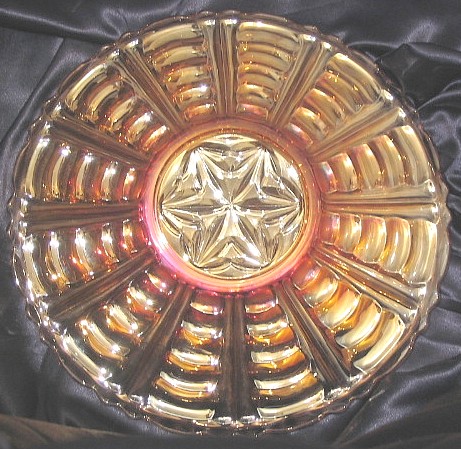
Exterior of DRAPERY VARIANT Plate displays the pattern
This unusual, 13” plate belongs to Colin Bason, and has been in his possession for some seven years.
(Our Thanks to Colin for allowing us to share your treasure!)
Its unusual rarity came to the attention of Steve Gill, who presented photos of it to the members of the internet CGA Club, which offers a daily chat, about many aspects of interest, identification, and collecting of all kinds of Carnival Glass.
We suggested it might be nice to place the plate on our site, which already presents notice of the same pattern in Tumbler shape, written by its owner, Cecil Whitley.
Steve not only arranged with his colleague to photograph this lovely marigold plate, but also acquired some background history surrounding the piece, to add to the mystique. Steve states:
“History, as related to me, but with a little background.
The plate was obtained from a rag and bone merchant in the 1950's. Rag and bone men were a very early form of recycling in England. A man would visit the neighborhood with a horse and cart, collecting old clothes, scrap metal and anything else he considered worthy of picking up, then would usually swap the items for, in the most part, small toys, tin whistles, etc.
I have no doubt of my colleague's belief that his grandmother obtained this plate in this way. However, I personally feel that, as he also has a number of small plates, also in this pattern, that the lady may actually have bought the plates. Since the plate is in such good condition, I think it was a display piece.”
Many Thanks, Steve, for your efforts,
Dean & Diane Fry-Nov. `04
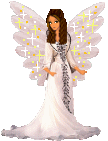
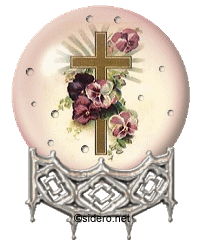

Should you care to contact the Frys, their email address is:
Search Our Sites
back to Carnival Glass 101
Our other sites you may enjoy:
Everything you EVER wanted to know about Indiana Glass
Great Reference for Newer Carnival Glass.
Complete Glassware Catalogs Available to Download
Questions? Comments? Suggestions? Broken Links? Corrections?
Your Friendly Webmaster is here to help!
